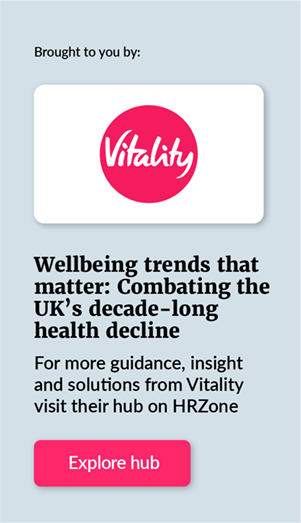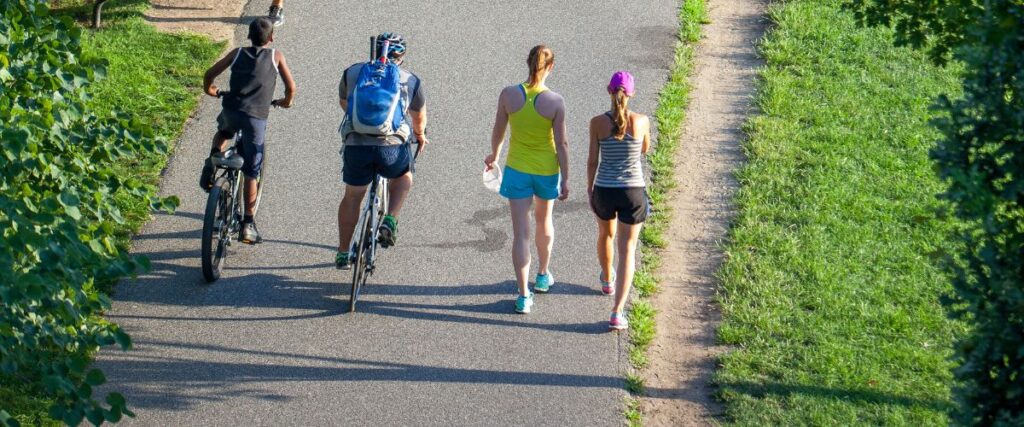Research from UK charity Mental Health Foundation finds 60% of UK adults admit that anxiety impacts their daily lives. Furthermore, one in 10 workers suffer from anxiety or depression, the most recent Britain’s Healthiest Workplace survey revealed.
The good news, however, is that Vitality data helps prove the intrinsic link between physical activity and mental wellbeing.
According to findings from those who engage with the Vitality Programme, members who exercise at least three days every week were found to have a 10% lower risk of anxiety and depression compared with less active members.
Simultaneously, active members are more likely to improve their mental wellbeing over time.
With the benefits of physical activity so well documented, exercise is now being prescribed by GPs for people who suffer from mild to moderate symptoms of mental ill-health.
Meanwhile, a recent study found that group running two to three times a week delivers the same mental health boost as a course of antidepressants.
The benefits are clear, but people misjudge the optimal amount of exercise required for a healthy lifestyle. Research conducted by ukactive found that 75% of Brits underestimate the 150 minutes of moderate to intensive exercise recommended by the NHS. Instead, around 40% thought 90 minutes of activity would be enough.
So, here are five simple tips for getting staff more active.
1. Every little helps
Given the sedentary nature of many workplaces and the fact many staff are now working from home (permanently or on a more flexible basis), making physical activity achievable can be a gamechanger.
There’s no need to dedicate hours at a time to exercise. Instead, short, ‘snackable’ bursts – whether that’s a 15-minute HIIT workout first thing or a short jog or walk during the lunch break – can do wonders for our health.
2. Build in activity
Given our busy lifestyles it’s also helpful if physical activity fits into our daily routine. This can mean offering staff tips to build less structured activity into their week.
For example, is there a section of the work commute that could be more active? This might entail getting off the bus one stop early or walking to the train station rather than driving. Even walking the stairs rather than taking the lift at the office can make a big difference. For those working at home, a remote workout or online yoga class could be just the ticket.
3. Everyone is different
What works for one staff member might not work for another. Vitality’s Head of Exercise and Physical Activity Jonny Kibble’s advice is: “Just do something you enjoy”. This could be something as simple as buying a skipping rope or throwing a frisbee in a near-by park.
“Gyms are also a great place to find new activities to try where there are experts on hand to help you,” he adds. This is why offering a diverse range of benefits – from gym discounts to step challenges to mindfulness rewards – stand more chance of having mass appeal across the workforce.
4. Small nudges and incentives
As human beings, finding motivation and making healthy choices is not always easy. This applies to employees too. However, according to behavioural economics, small nudges and incentives are often what’s needed to hack our innate tendency towards instant gratification.
For example, rewarding employees for doing just 10,000 steps three times a week with a handcrafted coffee from Caffe Nero is proven to be effective at increasing physical activity levels for those who engage with the Vitality Programme.
5. Form a running (or walking) club
With many workplaces enjoying more social interaction, getting together in a group to run in our lunch breaks – or even stroll around the block or park – can help boost office morale and help us all to be accountable. As long as the weather is ok, you’ll find the outcome is usually positive, offering staff a chance to mingle and make friends too.
Beyond physical activity
There’s no silver bullet to remedy mental health challenges, and there are other factors to recognise to combat feelings of anxiety and depression.
Studies have shown that mindfulness can reduce symptoms of depression and anxiety – and Vitality members are proving the theory.
Just under a third (27%) of Vitality members who use the Headspace app were found to have greater improvement in their mental wellbeing over time, compared with those who did not use the platform.
Plus, for those mental health challenges that cannot be prevented, ensuring staff have access to the right treatment, such as talking therapies offering cognitive behavioural therapy (CBT) and counselling, can mean employees feel supported, while also helping to reduce absenteeism and presenteeism.








